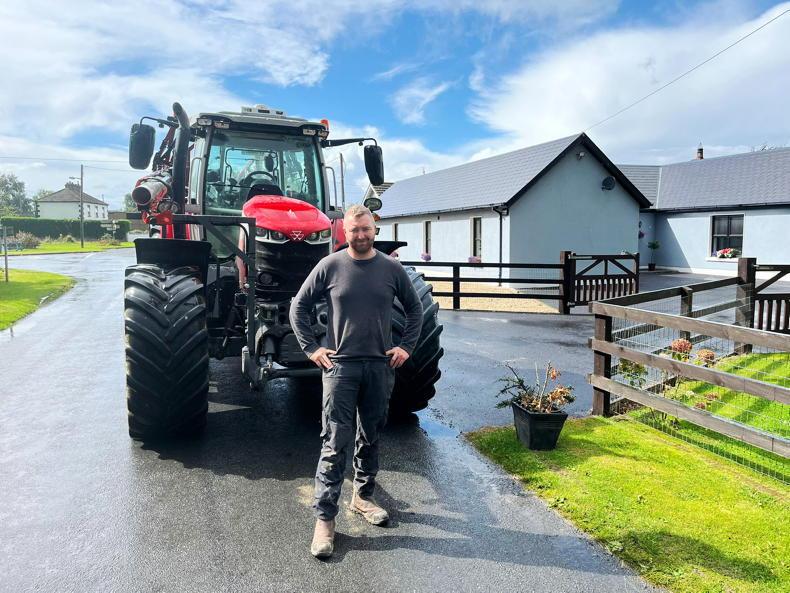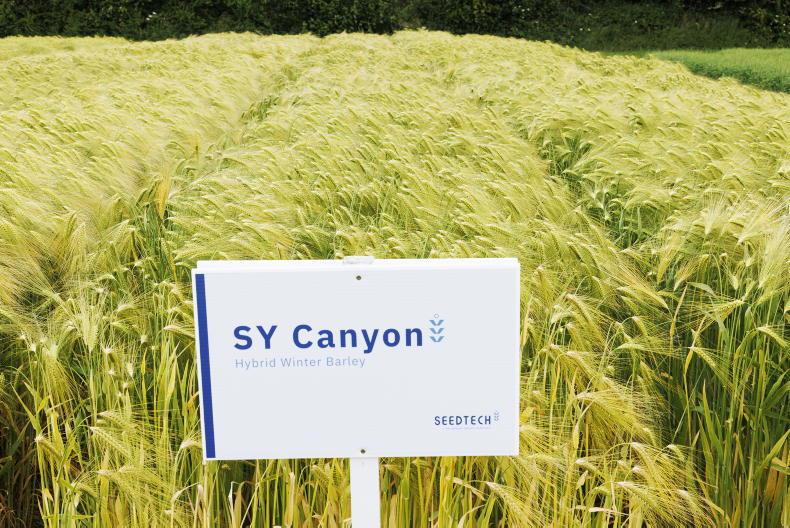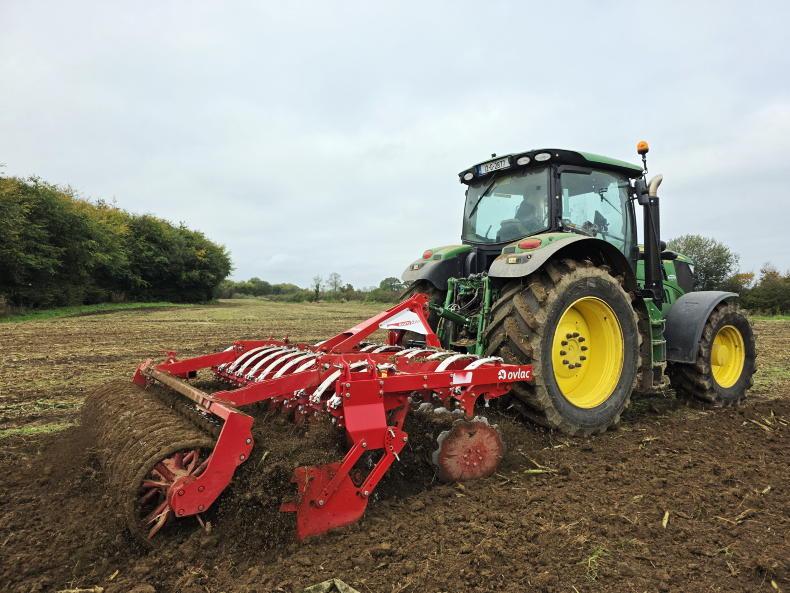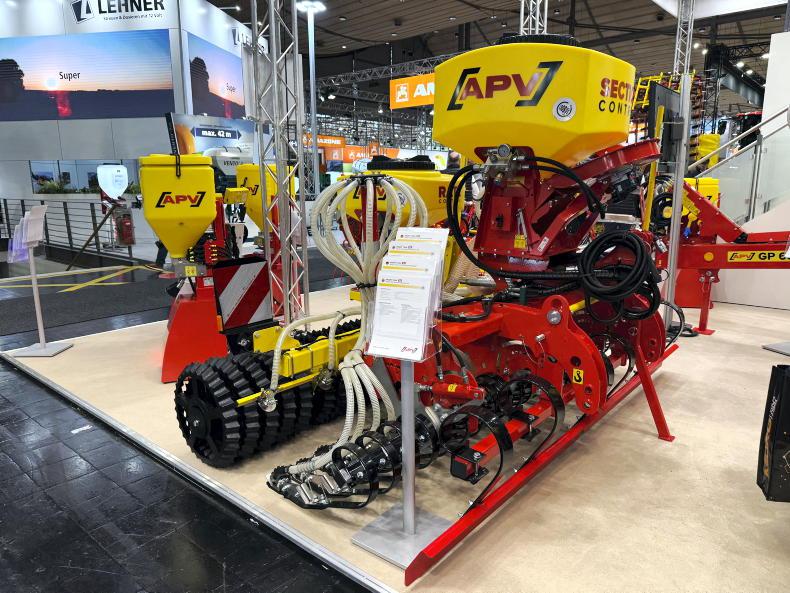The diploid perennial ryegrass variety Galgorm, tops the Teagasc Pasture Profit Index (PPI) for 2025. With a PPI of €263/ha, Galgorm is well ahead of second-placed variety Aberspey, which is a tetraploid with a PPI of €238/ha.
To recap, the PPI puts a monetary value on important traits that a variety displays while under the recommended lists trials. These traits are spring, summer and autumn growth, along with quality, silage yield and persistency. Each value is then summed up, which gives the variety a total PPI value.
The grazing utilisation trait sits outside of the PPI and uses a star system to denote the value.
A variety with five stars means that cows graze that variety out very well under grazing trials at Moorepark.
The grazing utilisation trait is assessed by letting cows in to graze the plots. They have free access to graze whatever plot they like and when average post-grazing height across the plots is visually assessed at 4cm, the cows are removed.
Then actual post-grazing heights are measured across all the plots. Varieties that have the lowest post-grazing heights are considered to have the best utilisation. Clearly, cows will only graze tight when they like the grass.
The number of varieties with five stars for utilisation has increased substantially over the last few years. There are now eight varieties on the recommended list with five stars, while there was only five varieties with five stars in 2022.
There are a further nine varieties with four stars for the grazing utilisation trait, meaning there are 17 out of 34 varieties on the list with four or five stars.
Just as farmers don’t pick bulls based solely on their overall EBI, do not simply opt for the highest PPI grass varieties available without looking through the sub-indices. What some farmers and seed sellers will do is make a mix from varieties that are complementary to each other.
For example, a variety like Abersevern has a high overall PPI at €225/ha, but a very low spring growth of just €1/ha, which is well below the average.
However, it has exceptionally high autumn growth at €66/ha, which is well above average.
In an ideal world this variety could be included in a mix with a variety with complementary traits, such as Barwave, which has excellent spring growth at €109/ha and moderately good autumn growth.
The thing to watch out for in this approach though is the heading date of a mixture.
For varieties grown on their own in a monoculture, heading date is not really a concern, but its important to have a close heading date when choosing a mixture.
This is because when a variety goes to seed the quality will reduce as it produces more stem to support a seed head. By having varieties in a mix with a tight heading date this period is reduced.
The opposite is also true, for example Barwave has a heading date of 22 May, while Abersevern has a heading date of 4 June.
For me, you wouldn’t include these varieties in a mix because the heading date is too spread out, even though they are complementary for other traits.
The full recommended list and PPI for 2025 is presented on Table 1 (left). Old reliables Abergain, Aberchoice and Astonenergy are still holding their own on the PPI.
The diploid perennial ryegrass variety Galgorm, tops the Teagasc Pasture Profit Index (PPI) for 2025. With a PPI of €263/ha, Galgorm is well ahead of second-placed variety Aberspey, which is a tetraploid with a PPI of €238/ha.
To recap, the PPI puts a monetary value on important traits that a variety displays while under the recommended lists trials. These traits are spring, summer and autumn growth, along with quality, silage yield and persistency. Each value is then summed up, which gives the variety a total PPI value.
The grazing utilisation trait sits outside of the PPI and uses a star system to denote the value.
A variety with five stars means that cows graze that variety out very well under grazing trials at Moorepark.
The grazing utilisation trait is assessed by letting cows in to graze the plots. They have free access to graze whatever plot they like and when average post-grazing height across the plots is visually assessed at 4cm, the cows are removed.
Then actual post-grazing heights are measured across all the plots. Varieties that have the lowest post-grazing heights are considered to have the best utilisation. Clearly, cows will only graze tight when they like the grass.
The number of varieties with five stars for utilisation has increased substantially over the last few years. There are now eight varieties on the recommended list with five stars, while there was only five varieties with five stars in 2022.
There are a further nine varieties with four stars for the grazing utilisation trait, meaning there are 17 out of 34 varieties on the list with four or five stars.
Just as farmers don’t pick bulls based solely on their overall EBI, do not simply opt for the highest PPI grass varieties available without looking through the sub-indices. What some farmers and seed sellers will do is make a mix from varieties that are complementary to each other.
For example, a variety like Abersevern has a high overall PPI at €225/ha, but a very low spring growth of just €1/ha, which is well below the average.
However, it has exceptionally high autumn growth at €66/ha, which is well above average.
In an ideal world this variety could be included in a mix with a variety with complementary traits, such as Barwave, which has excellent spring growth at €109/ha and moderately good autumn growth.
The thing to watch out for in this approach though is the heading date of a mixture.
For varieties grown on their own in a monoculture, heading date is not really a concern, but its important to have a close heading date when choosing a mixture.
This is because when a variety goes to seed the quality will reduce as it produces more stem to support a seed head. By having varieties in a mix with a tight heading date this period is reduced.
The opposite is also true, for example Barwave has a heading date of 22 May, while Abersevern has a heading date of 4 June.
For me, you wouldn’t include these varieties in a mix because the heading date is too spread out, even though they are complementary for other traits.
The full recommended list and PPI for 2025 is presented on Table 1 (left). Old reliables Abergain, Aberchoice and Astonenergy are still holding their own on the PPI.









SHARING OPTIONS